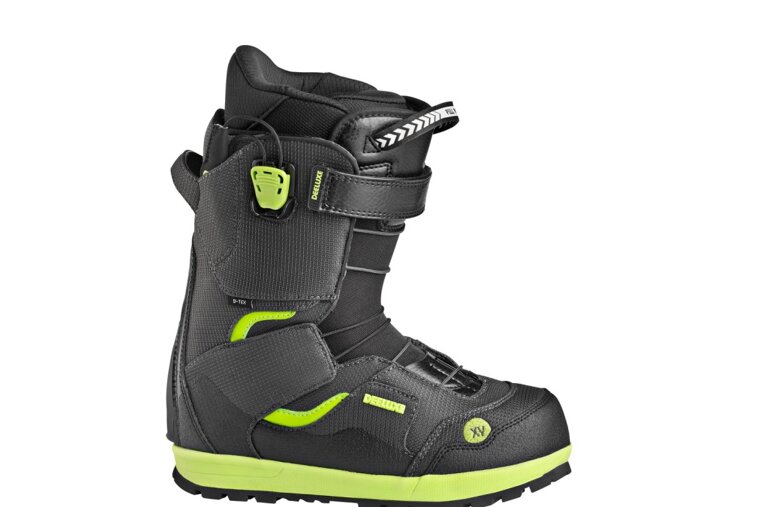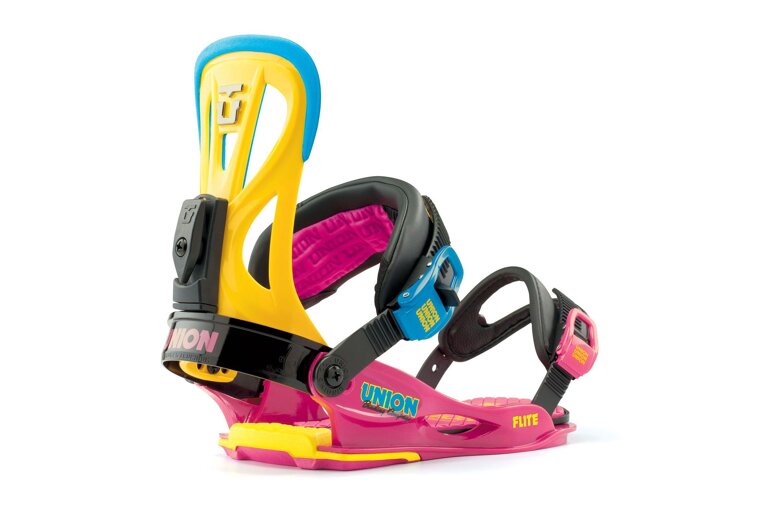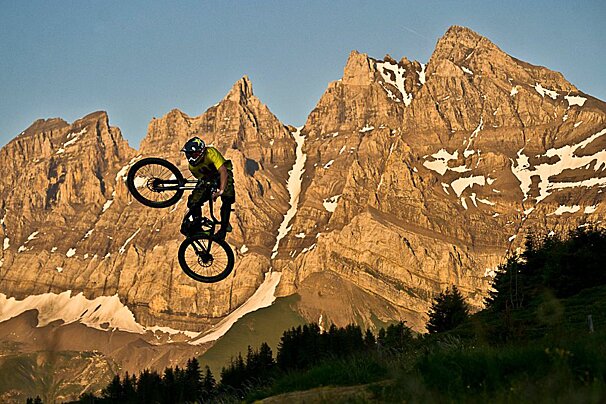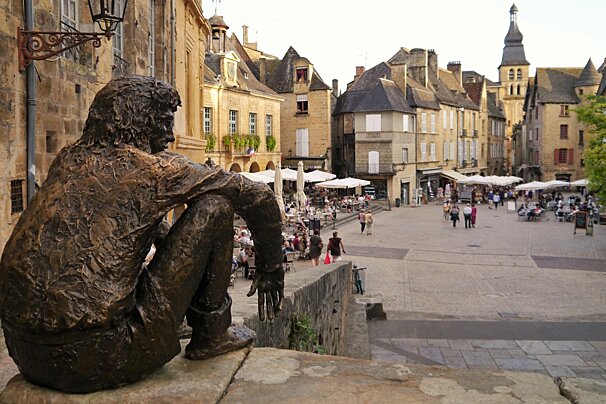
© SeeLesArcs.com
Snowboards & Equipment in Les Arcs
Discover the top Les Arcs snowboard and equipment options
You've begged, borrowed or rented up until now! It's time to bite the bullet and get your own gear. It's a complex and daunting task, so here's our guide to help you cross the Rubicon.
The first modern snowboard was created in the 1960s in Michigan, USA. Dubbed the 'snurfer', it sold about a million boards.
Other early pioneers were skateboarders and kids using their local and dry ski slopes throughout the seventies. One such 'snurfer' was Jake ‘Burton’ Carpenter from Vermont who in 1977 founded Burton Snowboards, made 'snowboards' out of flexible wooden planks, and went on to create the most famous snowboarding brand in the world.
The sport grew throughout the seventies and eighties, its core equipment consisting of a board with specialised bindings and boots. In the nineties it went mainstream, became recognised as an official international sport with its own federation, high-profile competitions were held worldwide creating sports stars like Terje Hakonsen, Shaun White and Travis Rice, and it became an Olympic event in 1998.
As snowboarding has evolved as a sport, the methods and materials used as well as the design of snowboards have changed. Now there is a huge amount of choice on offer when it comes to buying a snowboard from short, soft, detuned street rail boards to split boards for touring.

Snowboard boots
Your first purchase!
One of the best things about snowboarding, compared to skiing, is the boots. Snowboard boots are softer, easier to walk in and immediately comfortable compared to their plastic shelled brothers. We would always recommend new boots as opposed to second-hand boots - once used a couple of times they tend to mould to the previous users' feet, can lack padding and therefore warmth and comfort.
Buy in the resort. The type of boot you choose will be dictated to, by some extent, by the type of bindings you choose, or vice-versa. Step in bindings and alpine bindings will require different boots. If you have opted for conventional ratchet bindings almost any boot from any manufacturer will fit, which leaves you with a huge amount of choice.
A professional boot fitter should select the correct boot to suit your level and foot shape, and if you're really splashing out heat-moulding and a professionally made foot bed are recommended to stabilise your foot and ankle within the boot, avoid heel lift, and enhance the transmission of your energy through the binding into the board for optimum control and carving.
Stiffer boots will offer more control, softer ones will give more flex and allow you to move around more freely. As you can expect, it's all down to comfort and personal choice. Towards the end of March/early April, a number of local shops will have a good selection of boots in their end of season sales.

There are many boots and binding combinations on the market today, so it is important to know your riding style before you purchase. There are basically two types of bindings available: step-ins or ratchet/strap. Each has their own benefits and drawbacks.
Strap or ratchet bindings
The original and most popular of the bindings available on the market. There are two straps, one across the toe and one which secures at the ankle. A high plate rides up the back of your heel and lower calf and assists in forcing the heel into the binding, bringing the toe side of the board up. Strap or ratchet bindings offer good control and comfort as the foot feels secure.
Step-in bindings
This old style became less popular due to control and weight issues vs the dominant strap bindings.
Step-On® bindings
Recently Burton have pioneered the latest evolution in snowboarding with Step On® boots and bindings. This new system allows you to get in and out quickly - no buckles or straps. Just place your foot in the binding and you're ready. It's very new and comes with a price tag, but check it out.
Tip!
Before you make a decision on bindings, check that they will fit your boots and snowboard (not all bindings fit on all boards).
Splitboards
For splitboard bindings, a company that's been bubbling below the radar for a season or two is Spark R&D. Now general acceptance of their product, plus a huge quality increase, has resulted in Spark being the binding of choice for splitboard enthusiasts. The lightweight stiff base plates slide directly onto the Voilé mounting pucks, for a seamless and disc-free set up that's far less likely to come loose.

Snowboards
The local shops will offer a wide range of gear, with different boards to choose from depending on your ability, plus a couple of other factors such as gender, height, weight and age. The equipment on offer is hugely diverse, catering to an assortment of terrains and personal preference. Most shops will stock a selection of all mountain, freeride or freestyle boards as well as specialist models.
| Type | Description |
| All Mountain / Freeride snowboards | Shaped for park and powder and fine on the pistes, in the park and in the back country. A "go anywhere, do anything" weapon that will make a perfect first board. |
| Powder snowboards | For those that live for the back country, these boards are designed just for use in the deep stuff. Long and stiff and truly directional with a pointed nose and sometimes a V-shaped "swallow tail". The bindings on the board will be set near the tail increasing the length of the nose. |
| Splitboards | A splitboard allows the user to turn his snowboard into skis for touring up and back into a snowboard for riding powder. These boards are very specialist pieces of equipment and will only be used a few days a year. Quite an outlay, as they are not cheap, but they may be the best days of your winter. |
| Freestyle snowboards | The most obvious place to see freestyle snowboarding is in the park, but freestyle can be practiced anywhere on the hill. In general, they are shorter and softer than most other boards making them more forgiving in landings and easier to manoeuvre. They are also usually "twin-tipped", meaning it can be ridden backwards as easily as forwards. |
| Rail snowboards | Usually short, very soft, with de-tuned edges, and often flat or reverse camber helping them slide on obstacles reducing the chances of the edges biting into the rail or box. They are very specific and not ideal for any other discipline as the lack of an effective edge makes them difficult to control on normal snow. Perfect if all you want is jibbing but not ideal for the all rounder. |
| Park snowboards | Should reach between the bottom of your neck and your chin, designed to be ridden in the park and half-pipe. They are nearly always "twin" and tend to be short. In general, they are good for riding all over the hill, but will not be as fast or responsive as an all-mountain board and are too short for riding in powder, but they are great fun. |
| Pipe snowboards | Tend to be stiffer than other boards, meaning more "pop" and power in take off, but it requires more effort and precision. If you are new to freestyle then go for something softer and when it's time for a new board you can try something stiffer. |
| Alpine snowboards | Also known as carving or racing boards, they are long, narrow, stiff constructions focused on speed and producing the ultimate deep turn, with swift superior edge-holding power on hard snow, and good stability at high speed. They are very specific pieces of equipment and are not ideal for the majority of snowboarders. In most cases these boards are set up with boots similar to ski boots and use a basic hard boot binding. They are popular with boarder cross riders and slalom competitors. |

Testing your new gear
The reasons for buying in resort are two-fold. You can return for little tweaks once you've had a few hours in your new boots or on your new board, plus some shops have dedicated Test Centres, offering test days for equipment which means you can try before you buy.
Once you've found a reputable Test Centre shop, set aside a whole day, choosing a good weather day with good visibility, ideally at the beginning of your holiday, and try out some models back-to-back on the same slopes. Be honest with the shop about your snowboarding level and budget, and try to narrow your choice to three models - any more would be quite confusing.
The price of the test is usually deducted from the final price of your purchase.

Maintenance
Once you own your own equipment you will need to take care of it to ensure it lasts, and a good service can make all the difference between a good and bad day's riding.
Regular servicing usually includes a deep clean of the snowboard, edge sharpening/tuning and base waxing, repair of any holes and scratches on the base - all helping keep it like new for longer. Sharp edges and a structured, waxed base improves turns, speed and control. Waxing helps prevent water from getting into the core.
Although you can maintain your snowboard at home, it takes quite a bit of gear and know how to get it right. The simplest way is to drop it into a good repair shop. Many of the local shops in resort will be able to do an overnight service before you hit the slopes, giving you professional advice on what needs doing. Some snowboarders advocate a thick coat of 'storage' wax after each holiday to protect the base from drying out, but it's not essential, as long as your board gets a fresh wax before your next snowboarding holiday.
More inspiration...
If you can't make up your mind, hire your board and find out which one suits your style. You will also be able to check out the latest innovations in snowboarding gear.

























